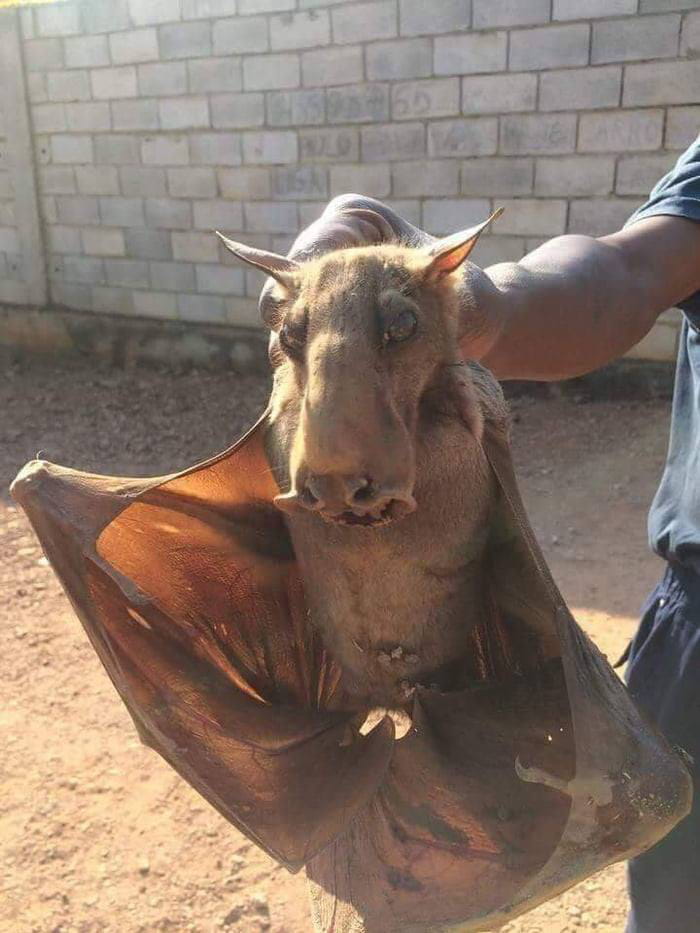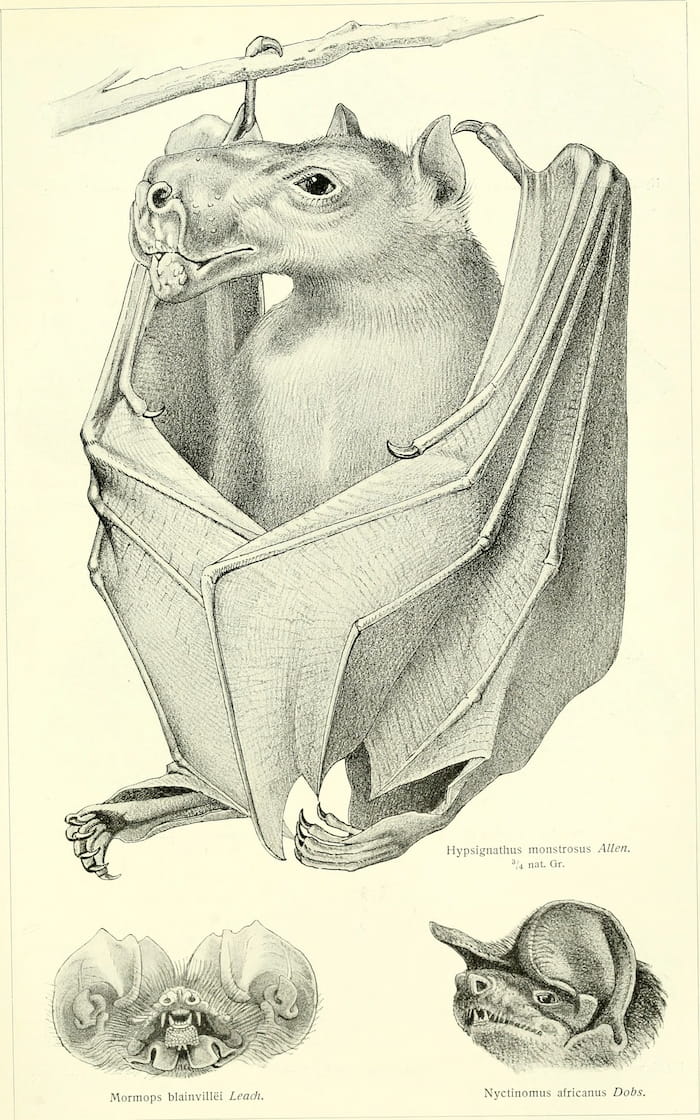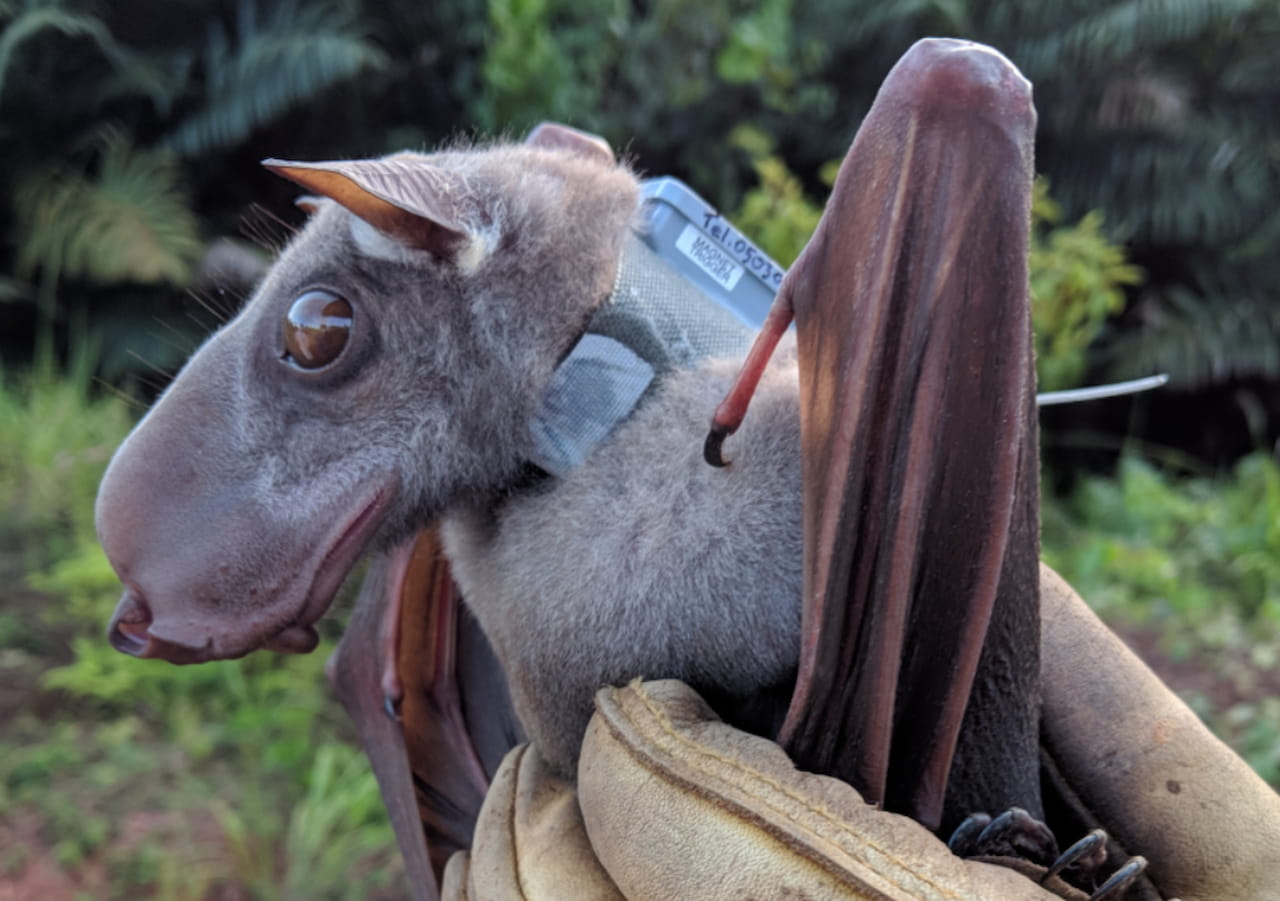Its scientific name, Hypsignathus monstrosus, describes a little animal as photogenic as the Hammer-headed fruit bat, a unique species in its genus that inhabits the sub-Saharan lands from Sierra Leone to Kenya, Angola, and Zambia.
It is a megabat, the largest of all those living in Africa, with a wingspan of almost a meter, and its name perfectly describes the shape of its head, making it resemble a monstrous medieval gargoyle, like those we can see atop cathedrals.
In reality, only the males have this appearance, as the females are usually smaller and their heads are more like that of a fox (which is why they are sometimes called flying foxes).

The reason is that the males have developed several adaptations that help them produce and amplify vocalizations, such as enormous vocal cords and large resonance chambers in the face, hence their appearance.
Males can weigh up to half a kilogram, with large square heads and huge lips, long smooth fur, and triangular ears of a dark brown color.
Their tongue is trident-shaped, with taste buds oriented backward to better extract the juice from fruits. Their wings are curiously small in relation to their body weight.

It prefers to live in riparian forests, swamps, mangroves, and palm forests. Despite its appearance, it is a rather harmless animal that feeds on fruit like figs, bananas, and mangoes, which it searches for at night, while it spends the days sleeping in trees, alone or in small groups, at 20 to 30 meters above the ground to avoid predators.
However, their loud nocturnal calls to attract females can be quite annoying, and it is concerning that some studied specimens have tested positive for Ebola antibodies, indicating they may be a possible reservoir for this virus. Even so, in some places, it is commonly consumed.
A curiosity that differentiates them from other mammals (except for some other bat species) is that males lack a Y chromosome and only have one X chromosome, having 35 chromosomes in total, compared to 36 in females.

This article was first published on our Spanish Edition on May 23, 2024: El mayor murciélago de África parece una monstruosa gárgola de una catedral medieval
Sources
Julia Boland, Hypsignathus monstrosus hammer-headed fruit bat | Hammer-headed Fruit Bat (Bat Conservation International) | Paul Langevin, Robert M. R. Barclay, Hypsignathus monstrosus. Mammalian Species, Issue 357, 26 April 1990, Pages 1–4, doi.org/10.2307/3504110 | Wikipedia
Discover more from LBV Magazine English Edition
Subscribe to get the latest posts sent to your email.




















